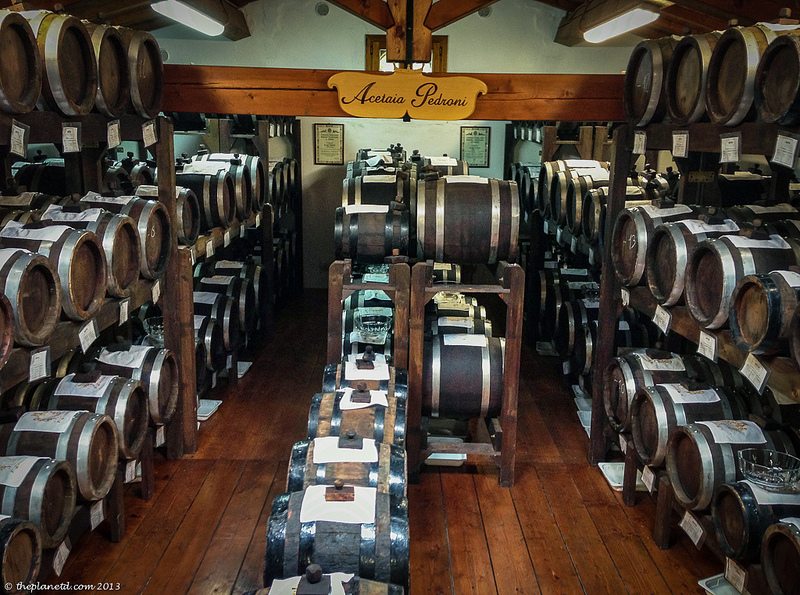Content Overview
When we were told that we’d be learning how Traditional Balsamic Vinegar was made, I will admit, I wasn’t too excited. You see, before going to Emilia Romagna in Italy, I didn’t have much of an appreciation for food.
We’ve tasted meals by some of the top chefs in the world, experienced Michelin Star restaurants, and dined in 5-star venues. While we loved the food, we never had an appreciation for the process. That all changed in Emilia Romagna.
Traditional Balsamic Vinegar
It was the people of the region who made us both fall in love with food. Food is a passion in Emilia Romagna, and by spending three weeks in Bologna while doing day trips around the region, we developed a true love for culinary delights.
Dave and I tend to focus on the people when we travel. We can have the most expensive food, hotel room, or seat in the house, but if the people aren’t interesting, it makes the experience less impactful.
The People Make The Experience
In Emilia Romagna, it’s truly all about the people, and we cared very much about that! The food they create, consume, and share carries a rich history. Every place we visited had a story, and every person we met had memorable personalities. The locals are unforgettable.
One of our most cherished encounters was with the family behind Acetaia Pedroni in Rubbiara, near the ancient town of Modena. This balsamic producer is one of the oldest in the province, operating since 1862, and has been a family-run establishment for 150 years. They take great pride in their legacy.
How Traditional Balsamic Vinegar Is Made
The process of making balsamic vinegar is fascinating. It starts with the same grapes used for Lambrusco and Trebbiano. The procedure is as follows:
- The first batch is made in October after grape harvesting.
- The grapes are boiled, initiating the aging process.
- The liquid is placed in the largest barrel, where it remains for a year.
It Takes a Minimum of 12 Years for Traditional Balsamic Vinegar to Age
After a year, the balsamic master transfers a portion of vinegar from the large barrel into smaller barrels. A meticulous process ensues, moving the vinegar through a series of five barrels of varying sizes, from large to small, until it reaches the final cask that matures the Aceto Balsamico Tradizionale.
This maturation process takes a minimum of 12 years, with some varieties aged up to 45 years. At 12 years, tasting begins.
Balsamic Vinegar Scoring System
Many rules and traditions guide the process, including a rigorous scoring system evaluated by an expert taster. The vinegar is scored out of a total of 200 points based on taste, texture, and aroma. If the score is too low, the vinegar is returned to the barrel for at least another year.
Moreover, barrels stained with ancient vinegar allow the wine to absorb flavors from decades past, enhancing its character.
A Lot of Work for a Small Bottle of Aged Balsamic
To produce traditional balsamic, only 10% of the smallest barrel can be utilized, yielding just one liter of balsamic! This producer is one of the largest in the area, creating only 500 liters each year, showcasing the patience required in this meticulous craft.
Slow Food Movement
Guiseppe, the grandfather of the operation, was among the first people involved in the Slow Food movement in Italy, which was initiated in the late 1980s to counter the rise of fast food. While fast food dominates globally, in Emilia Romagna, the movement persisted, emphasizing the enjoyment of quality food at a leisurely pace.
Tasting Aged Balsamic Vinegar
After our tour of the balsamic production, we experienced a tasting of their creations. We were surprised to sample 25 and 40-year-old bottles of balsamic!
Proper traditional balsamic should never be cooked or mixed into salad dressings; rather, it is meant to be savored and drizzled over your favorite dishes. We enjoyed the 25-year balsamic on our tagliatelle and frittatas, while the 40-year-old balsamic adorned our gelato—a heavenly combination!
One of our favorite moments during our stay was savoring aged balsamic drizzled over fresh Parmigiano-Reggiano (parmesan cheese). It is a staple served at every meal in the region.
We reminisce fondly of indulging in delicious parmesan from Parma paired with aged balsamic from Modena. Can we go back to Bologna, please?
Additionally, the producers offer younger balsamic varieties meant for cooking and salads. We relished chicken cooked in an 8-year balsamic and balsamic-infused pork.
It’s notable that enjoying such meals doesn’t encourage fast eating. With multiple courses, aged balsamic, and bottles of Lambrusco (the sparkling red wine of the region), you’ll never want to leave.
However, Guiseppe would often cheerfully urge us, “Andiamo, Andiamo!” implying it was time to move along. Pietro seemed to relish this ongoing joke—a fast-paced reminder from the slow food guy!




